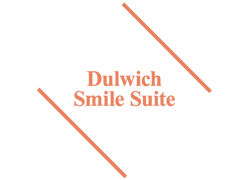There are a range of different orthodontic treatments designed to straighten your teeth, including fixed appliances such as traditional metal braces, ceramic braces or self-ligating braces, or even hidden braces such as lingual braces or Invisalign. All of these treatment options aim to achieve a smile you can be proud of, however, without continued care, all of this hard work may be in vain - an orthodontic retainer is vital to helping your teeth stay in the desired position.
Why you need a retainer and when to wear it
After months of orthodontic treatment to move crooked or misaligned teeth into the desired position, an orthodontic retainer is the most effective method for ensuring that the teeth stay in their new position once braces are removed or clear aligners are no longer worn.
There are two main types of retainers to choose from - fixed or removable.
Removable retainers are often made from clear plastic, similar to the clear aligners used for Invisalign treatment. An Orthodontist will usually recommend that once braces are removed or treatment ends, removable retainers should be worn most of the time for the first few months or so (removing them for mealtimes, cleaning and flossing). After this point, it’s normally recommended that orthodontic retainers are worn during the night.
Fixed retainers feature a metal wire that is fitted to the back of your teeth to ensure they remain in position and your bite does not shift. For people that received orthodontic treatment at a younger age, it may be recommended that a fixed retainer is worn for at least 10 years subsequent to the removal of fixed braces.
For people who had teeth straightening treatment as teenagers or adults, it is usually recommended that retainers are worn for the rest of their life to ensure the teeth stay in place, preventing the need for further orthodontic treatments.
Caring for orthodontic retainers
Caring for fixed retainers is much like caring for fixed braces. It’s important to clean the wire attached to the teeth using a toothbrush and dental floss to clean away bacteria that could lead to cavities or gum disease. Removable retainers can be cleaned in lukewarm water after meals, using a toothbrush to gently brush away bacteria.
If you find that removable retainers rub on your gum, causing discomfort, you can carefully trim the edges using nail clippers or other small, sharp scissors. To smooth down rough edges, you can use an emery board or nail file - if you are unsure, simply talk to your orthodontist and ask for their advice.
Retainer emergencies
In the case that a fixed retainer breaks or becomes loose, it’s important to arrange an appointment with an orthodontist as soon as possible so that it can be repaired or replaced. Should you lose or damage a removable retainer, you should also arrange an emergency orthodontic appointment to ensure that the retainer can be repaired or replaced - in the case of clear plastic retainers, which are the most popular type of removable retainer, a scan of your mouth or mould of the teeth may need to be taken for new retainers to be made.
Whenever there is a problem with retainers, it’s vital that immediate action is taken - never wait until the next scheduled appointment as this can provide plenty of time for teeth to relapse into their old position. The purpose of retainers is to ensure you never need to have your teeth straightened again!
If you have any questions about wearing retainers after orthodontic treatment, or if you are in need of an urgent appointment to repair or replace orthodontic retainers, call Dulwich Orthodontics on 020 8265 9797.






